A nice gentleman brought in a Samsung Galaxy Tab S TM-807V with a severly cracked screen. It was also very attached to the 3rd party plastic case/cover it was in. It was clear the Tab had not been removed from its case in a very long time.

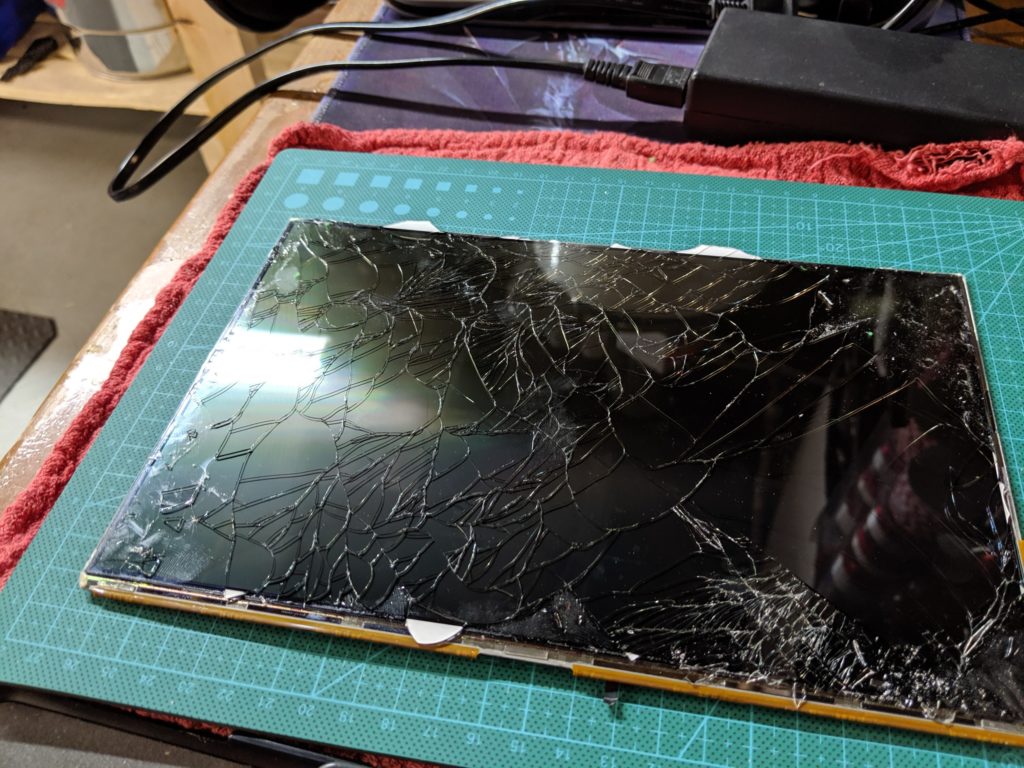
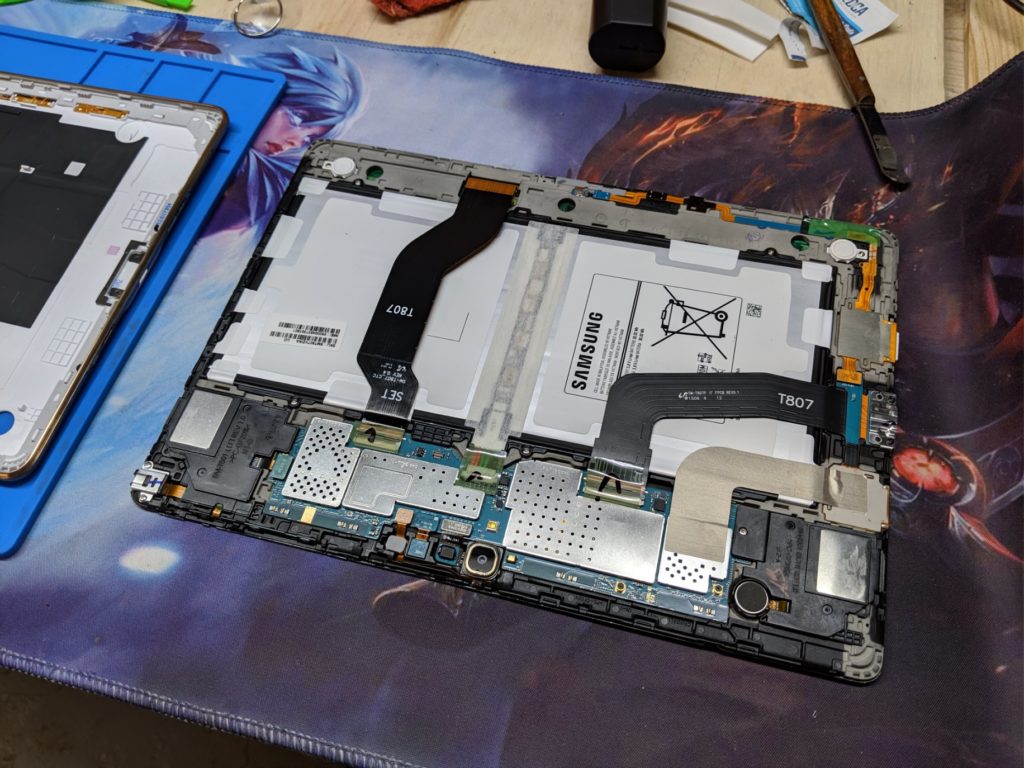
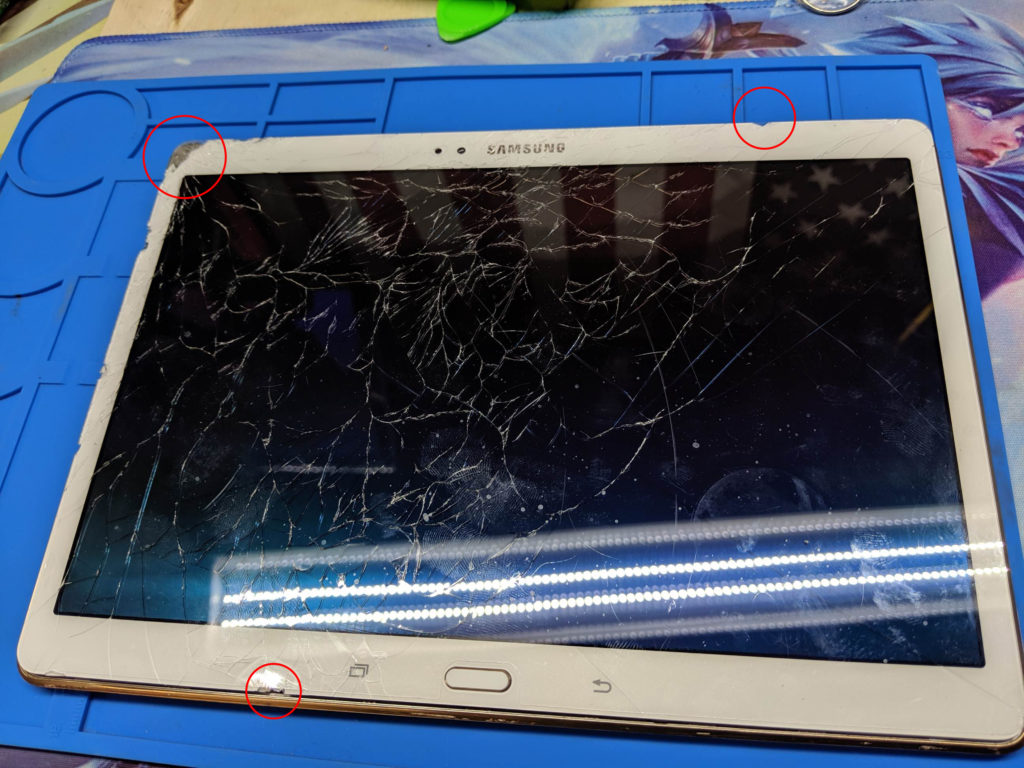
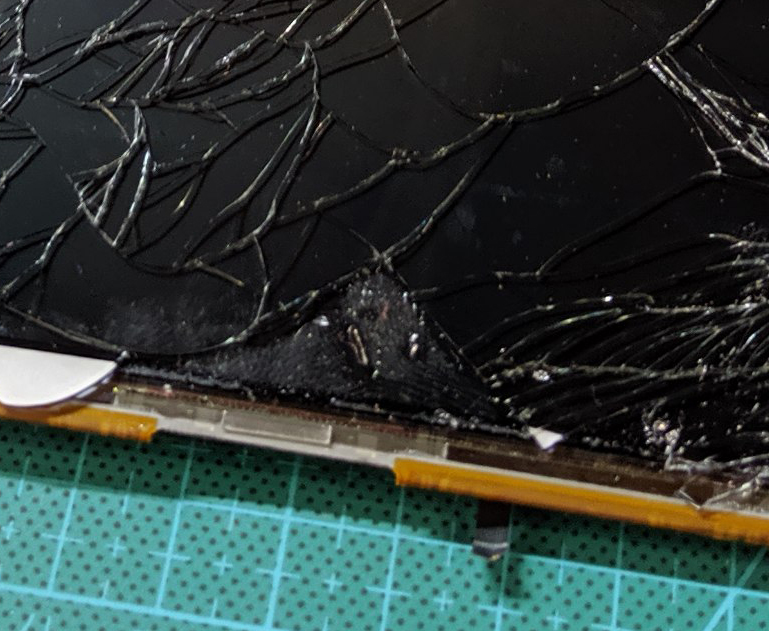
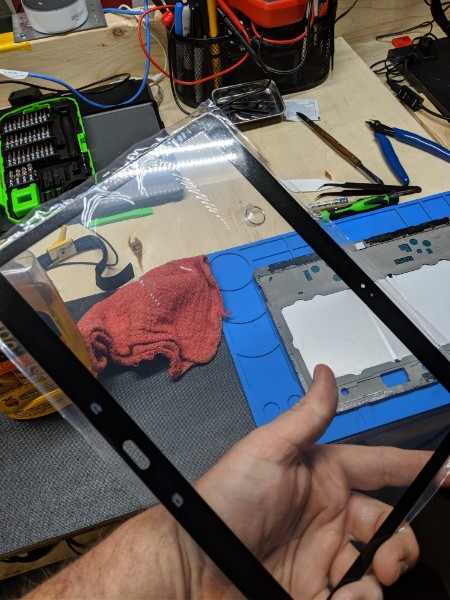
The first warning signs should have been how deep the damage went. If you click the images you will see red circles highlighting the damage. The screen wasn’t just cracked, it was degraded. In the upper lefthand corner the screen was missing and you could see the underlying component. Tabs, and tablets in general, have an adhesive that runs all around the outside to keep the digitizer (the part that translates your touch into data) in place.
This usually isn’t a problem until you find out that the screen isn’t actually sitting on top of the actual display and that it is glued to it. Replacing a screen is actually pretty easily and done fairly cheaply I might add. If you didn’t know how to do it you could find many YouTube videos showing you how.
In short, you take a heat gun around the outside perimeter of the device to soften the adhesive. Then you use a small plastic prying tool to gently lift it up. The idea is to remove the screen in one piece despite the broken glass. Generally you can put tape on the screen to help keep the glass in place if you feel that will be an issue.
But this device had shattered to the substrate of the display and exposed the adhesive beneath it. So when I went to lift the screen off I also actually lifted this glass shell off the OLED.
When the screen is so severly damaged with thousands of glass shards AND it is adhered to the screen, it makes the replacement difficult and prone to failure. While a repair of this magnitude is feasible, it would have just meant the replacement of the entire display unit and not the digitizer atop it.

Chris Bond is the owner of this website, the father of three children, the husband of a wonderful woman, and the tinkerer of gadgets. He enjoys gaming, flying drones, building Gundam models, collecting robots and solving problems. He is currently a Senior Web Developer at NDIC.
